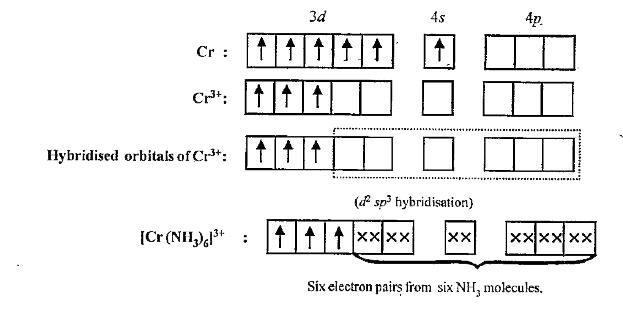Text Solution
Verified by Experts
|
Topper's Solved these Questions
CO-ORDINATION COMPOUNDS
OMEGA PUBLICATION|Exercise MULTIPLE CHOICE QUESTIONS |38 VideosView PlaylistCHEMISTRY IN EVERYDAY LIFE
OMEGA PUBLICATION|Exercise MULTIPLE CHOICE QUESTIONS (MCQs)|20 VideosView PlaylistELECTROCHEMISTRY
OMEGA PUBLICATION|Exercise MULTIPLE CHOCIE QUESTION |46 VideosView Playlist
Similar Questions
Explore conceptually related problems
OMEGA PUBLICATION-CO-ORDINATION COMPOUNDS -MULTIPLE CHOICE QUESTIONS
- By using valence bond theory discuss the geometry aud magnetic nature ...
04:59
|
Playing Now - An example of double salt is
06:57
|
Play - Write IUPAC name of [Co(NH3)6]Cl3.
03:10
|
Play - Name of complex [pt(NH3)6]Cl4 is
02:53
|
Play - [Co(NH3)5 Br]SO4 and [Co(NH3)5 SO4] Br areexamples of which type of i...
03:51
|
Play - Which complex has square planar structure?
09:05
|
Play - The number of d-electrons in [Cr(H2O)6]^(3+) (at. No. of Cr = 24 ) is
01:32
|
Play - The oxidation number of iron in K4[Fe (CN)6] is :
01:21
|
Play - The IUPAC name of [Co(Cl) (NO2) (en)2 ] Cl is
04:17
|
Play - Which of the following complex species involves d^2sp^3 hybridisation ...
10:21
|
Play - Which of the following acts as a positive ligand?
01:44
|
Play - The co-ordination number of Cr in [Cr(NH3)3(H2O)3]Cl3 is
01:43
|
Play - The magnetic moment of [Ni(CO4)] is
05:00
|
Play - The effective atomic number of Cr (Atomic no. = 24) in [Cr (NH3)6]Cl3 ...
03:38
|
Play - The effective atomic number of Fe in Fe(CO)5 is
02:54
|
Play - The coordination number of copper in cuprammonium sulphate is
01:47
|
Play - en is an example of a
03:34
|
Play - Ferrocene is
03:40
|
Play - Which of the following ligands is expected to be bidentate?
02:04
|
Play - The number of unpaired electrons in the complexes [NiCl4]^(-2) and [Ni...
05:41
|
Play - According to effective atomic number, the central metal acquires
03:51
|
Play
